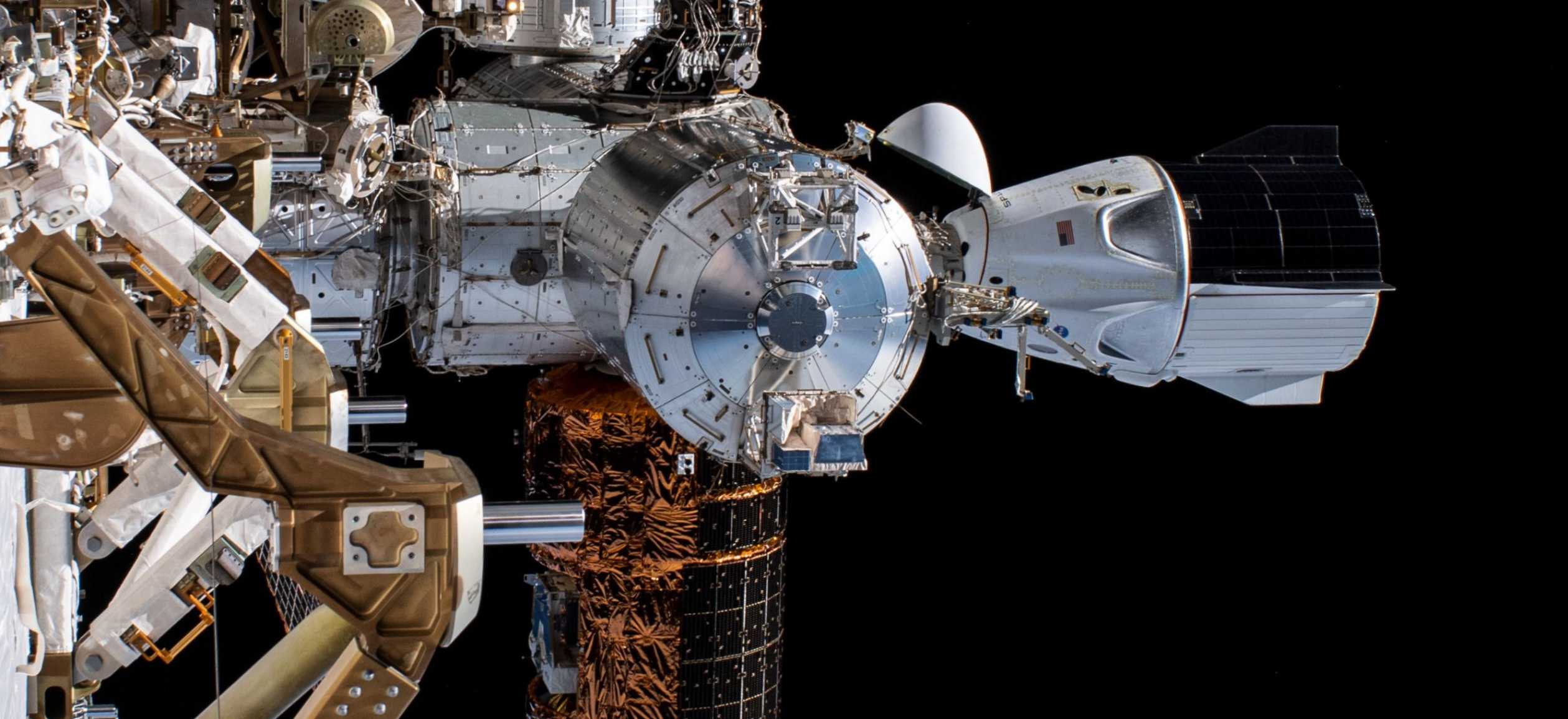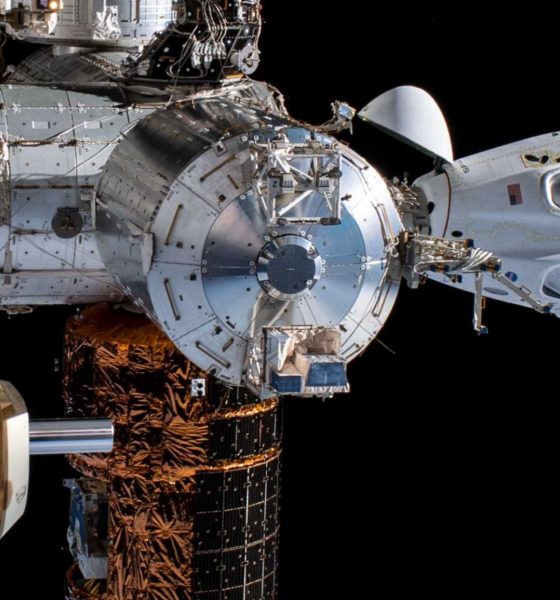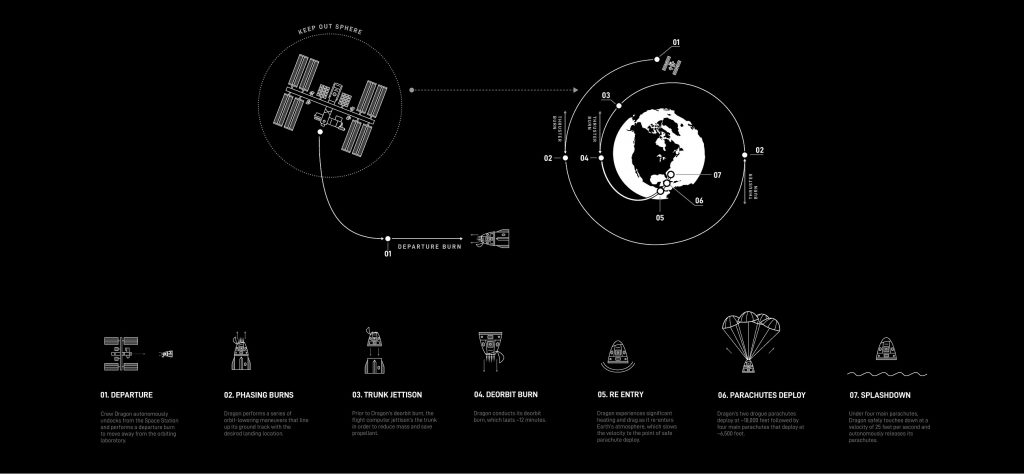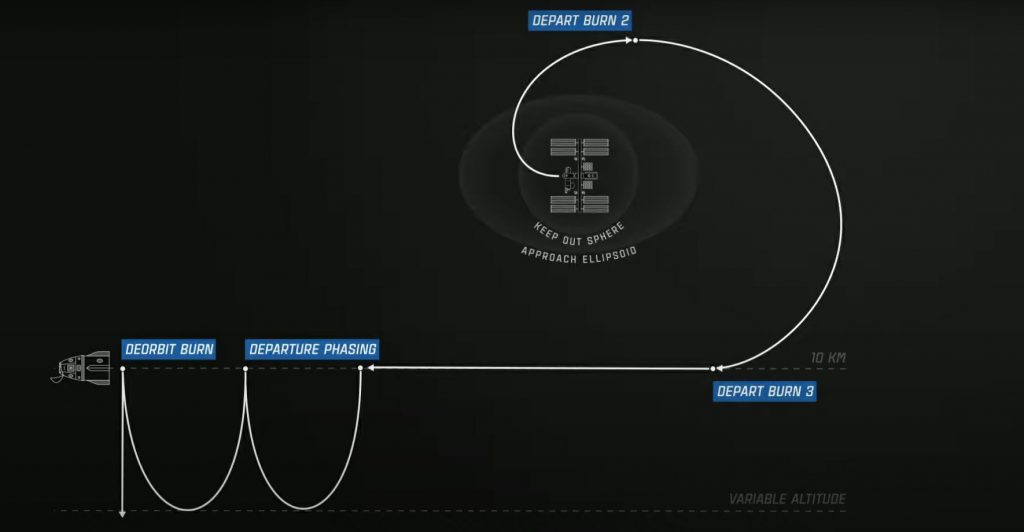

News
SpaceX set for historic Crew Dragon astronaut mission with splashdown from space
SpaceX is close to becoming the first-ever private astronaut transportation service with the conclusion of the Crew Dragon Demonstration 2 mission (Demo 2) just hours away. Following a completely flawless autonomous undocking from the International Space Station (ISS), SpaceX’s Crew Dragon capsule performed a series of autonomous burns setting it up for a picture-perfect return Sunday afternoon, August 2.

The process of ending Crew Dragon’s first astronaut mission – and final certification test flight – stretches about two days. On Saturday, August 1, the crew of the Demo 2 mission, NASA astronauts Bob Behnken and Doug Hurley, participated in a farewell ceremony while aboard the International Space Station. The pair were joined by ISS Commander NASA astronaut Chris Cassidy and Roscosmos cosmonauts Anatoly Ivanishin and Ivan Vagner to officially say goodbye ahead of their journey home.
The Demo-2 crew then spent the next few hours performing final check out tasks and packing the Crew Dragon capsule, which they designated as the “Dragonship Endeavour,” with the necessary cargo including a few special artifacts. Doug Hurley was sure to bring home a commemorative American flag that was delivered to the ISS by the crew of the final space shuttle mission STS-135 in 2011.
This flag symbolized the end of NASA’s space shuttle program and the beginning of the Commercial Crew era of astronaut transportation. The flag will be returned by Doug Hurley, a member of the final STS-135 crew, to later be flown on a future mission to the Moon through NASA’s Artemis program. Bob Behnken was sure to bring home the zero-G indicator that traveled with the astronauts during their ascent trip to the ISS, a stuffed toy apatosaurs dinosaur named Tremor. The dinosaur was chosen by Behnken and Hurley’s young sons and will be returned to them.
Following the farewell ceremony, the Demo-2 crew boarded the Dragonship Endeavour and began undocking procedures. The astronauts, although able to intervene if necessary, notably had an observatory role during undocking as the Crew Dragon is designed to perform all docking and undocking procedures completely autonomously. The capsule unhooked from the ISS, backed up, and performed a series of burns to bring it up, over, and in front of the ISS completely autonomously, without incident.

Following the series of successful orientation burns, Behnken and Hurley were permitted to go to sleep aboard the capsule as Crew Dragon would spend the next nineteen hours orbiting the Earth ahead of its reentry, descent, and splashdown landing. As the crew slept, Crew Dragon autonomously performed a series of phasing burns to line the capsule up with the correct trajectory to attempt reentry just a few hours later.
Should everything proceed as planned, the Crew Dragon carrying the Demo-2 crew is expected to attempt deorbit, reentry, parachute deployment, and landing on the afternoon of Sunday, August 2nd. Behnken and Hurley are expected to return for a splashdown landing in the Gulf of Mexico off of Florida’s west coast near Pensacola, FL at 2:48 pm ET/11:48 am PT. A backup splashdown location has also been designated off the coast of Panama City, FL.
A successful landing will solidify the Demo-2 mission in the history books and make SpaceX the first private company to transport NASA astronauts to and from the ISS successfully. Following the conclusion of the Demo-2 mission, the first operational mission of Crew Dragon, Crew-1, is tasked to take place later this fall no earlier than September 2020.
You can join NASA and SpaceX for the reentry events live on their social media accounts. The event is also available via live webcast found below or on SpaceX’s website.
Check out Teslarati’s newsletters for prompt updates, on-the-ground perspectives, and unique glimpses of SpaceX’s rocket launch and recovery processes.

News
Tesla (TSLA) receives “Buy” rating and $551 PT from Canaccord Genuity
He also maintained a “Buy” rating for TSLA stock over the company’s improving long-term outlook, which is driven by autonomy and robotics.

Canaccord Genuity analyst George Gianarikas raised his Tesla (NASDAQ:TSLA) price target from $482 to $551. He also maintained a “Buy” rating for TSLA stock over the company’s improving long-term outlook, which is driven by autonomy and robotics.
The analyst’s updated note
Gianarikas lowered his 4Q25 delivery estimates but pointed to several positive factors in the Tesla story. He noted that EV adoption in emerging markets is gaining pace, and progress in FSD and the Robotaxi rollout in 2026 represent major upside drivers. Further progress in the Optimus program next year could also add more momentum for the electric vehicle maker.
“Overall, yes, 4Q25 delivery expectations are being revised lower. However, the reset in the US EV market is laying the groundwork for a more durable and attractive long-term demand environment.
“At the same time, EV penetration in emerging markets is accelerating, reinforcing Tesla’s potential multi‑year growth runway beyond the US. Global progress in FSD and the anticipated rollout of a larger robotaxi fleet in 2026 are increasingly important components of the Tesla equity story and could provide sentiment tailwinds,” the analyst wrote.
Tesla’s busy 2026
The upcoming year would be a busy one for Tesla, considering the company’s plans and targets. The autonomous two-seat Cybercab has been confirmed to start production sometime in Q2 2026, as per Elon Musk during the 2025 Annual Shareholder Meeting.
Apart from this, Tesla is also expected to unveil the next-generation Roadster on April 1, 2026. Tesla is also expected to start high-volume production of the Tesla Semi in Nevada next year.
Apart from vehicle launches, Tesla has expressed its intentions to significantly ramp the rollout of FSD to several regions worldwide, such as Europe. Plans are also underway to launch more Robotaxi networks in several more key areas across the United States.
News
Waymo sues Santa Monica over order to halt overnight charging sessions
In its complaint, Waymo argued that its self-driving cars’ operations do not constitute a public nuisance, and compliance with the city’s order would cause the company irreparable harm.

Waymo has filed a lawsuit against the City of Santa Monica in Los Angeles County Superior Court, seeking to block an order that requires the company to cease overnight charging at two facilities.
In its complaint, Waymo argued that its self-driving cars’ operations do not constitute a public nuisance, and compliance with the city’s order would cause the company irreparable harm.
Nuisance claims
As noted in a report from the Los Angeles Times, Waymo’s two charging sites at Euclid Street and Broadway have operated for about a year, supporting the company’s growing fleet with round-the-clock activity. Unfortunately, this has also resulted in residents in the area reportedly being unable to sleep due to incessant beeping from self-driving taxis that are moving in and out of the charging stations around the clock.
Frustrated residents have protested against the Waymos by blocking the vehicles’ paths, placing cones, and “stacking” cars to create backups. This has also resulted in multiple calls to the police.
Last month, the city issued an order to Waymo and its charging partner, Voltera, to cease overnight operations at the charging locations, stating that the self-driving vehicles’ activities at night were a public nuisance. A December 15 meeting yielded no agreement on mitigations like software rerouting. Waymo proposed changes, but the city reportedly insisted that nothing would satisfy the irate residents.
“We are disappointed that the City has chosen an adversarial path over a collaborative one. The City’s position has been to insist that no actions taken or proposed by Waymo would satisfy the complaining neighbors and therefore must be deemed insufficient,” a Waymo spokesperson stated.
Waymo pushes back
In its legal complaint, Waymo stated that its “activities at the Broadway Facilities do not constitute a public nuisance.” The company also noted that it “faces imminent and irreparable harm to its operations, employees, and customers” from the city’s order. The suit also stated that the city was fully aware that the Voltera charging sites would be operating around the clock to support Waymo’s self-driving taxis.
The company highlighted over one million trips in Santa Monica since launch, with more than 50,000 rides starting or ending there in November alone. Waymo also criticized the city for adopting a contentious strategy against businesses.
“The City of Santa Monica’s recent actions are inconsistent with its stated goal of attracting investment. At a time when the City faces a serious fiscal crisis, officials are choosing to obstruct properly permitted investment rather than fostering a ‘ready for business’ environment,” Waymo stated.
News
Tesla FSD v14.2.2 is getting rave reviews from drivers
So far, early testers have reported buttery-smooth drives with confident performance, even at night or on twisty roads.

Tesla Full Self-Driving (Supervised) v14.2.2 is receiving positive reviews from owners, with several drivers praising the build’s lack of hesitation during lane changes and its smoother decision-making, among others.
The update, which started rolling out on Monday, also adds features like dynamic arrival pin adjustment. So far, early testers have reported buttery-smooth drives with confident performance, even at night or on twisty roads.
Owners highlight major improvements
Longtime Tesla owner and FSD user @BLKMDL3 shared a detailed 10-hour impression of FSD v14.2.2, noting that the system exhibited “zero lane change hesitation” and “extremely refined” lane choices. He praised Mad Max mode’s performance, stellar parking in locations including ticket dispensers, and impressive canyon runs even in dark conditions.
Fellow FSD user Dan Burkland reported an hour of FSD v14.2.2’s nighttime driving with “zero hesitations” and “buttery smooth” confidence reminiscent of Robotaxi rides in areas such as Austin, Texas. Veteran FSD user Whole Mars Catalog also demonstrated voice navigation via Grok, while Tesla owner Devin Olsen completed a nearly two-hour drive with FSD v14.2.2 in heavy traffic and rain with strong performance.
Closer to unsupervised
FSD has been receiving rave reviews, even from Tesla’s competitors. Xpeng CEO He Xiaopeng, for one, offered fresh praise for FSD v14.2 after visiting Silicon Valley. Following extended test drives of Tesla vehicles running the latest FSD software, He stated that the system has made major strides, reinforcing his view that Tesla’s approach to autonomy is indeed the proper path towards autonomy.
According to He, Tesla’s FSD has evolved from a smooth Level 2 advanced driver assistance system into what he described as a “near-Level 4” experience in terms of capabilities. While acknowledging that areas of improvement are still present, the Xpeng CEO stated that FSD’s current iteration significantly surpasses last year’s capabilities. He also reiterated his belief that Tesla’s strategy of using the same autonomous software and hardware architecture across private vehicles and robotaxis is the right long-term approach, as it would allow users to bypass intermediate autonomy stages and move closer to Level 4 functionality.








